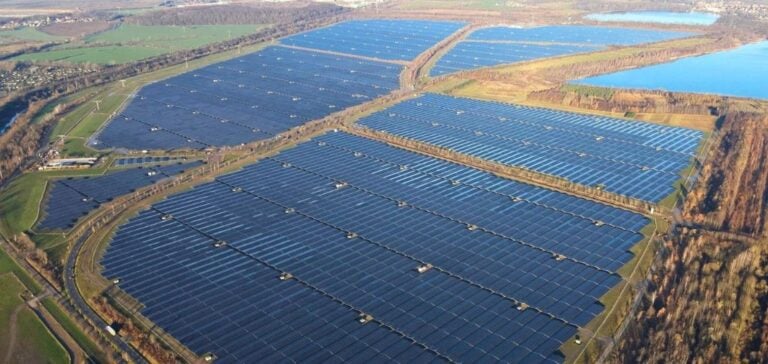The construction of large-scale solar parks is progressing in Germany, reflecting the country’s ongoing efforts towards a green energy transition. Naturstrom AG, a major player in the renewable energies sector, is currently carrying out a significant project in Zeschdorf-Petershagen, near Frankfurt/Oder.
With an installed capacity of 70 MW, this will be the largest solar power plant of its kind ever built by the Group.
A large-scale project
Construction of the solar park began in May, following extensive decontamination of the site, which had been used as a battlefield during the Second World War.
Once completed, the facility will generate around 73 million kWh of electricity per year, enough to power more than 22,000 average households.
The park covers 73 hectares, demonstrating Naturstrom’s commitment to increasing renewable energy production.
In anticipation of the park’s commissioning, a transformer station has already been built in Briesen, some 9 kilometers away, enabling the solar park to be integrated into the national electricity grid.
Final connection to the 110 kV grid is scheduled for autumn, ensuring efficient distribution of the green electricity generated.
Promoting biodiversity
Despite the use of a large agricultural area, the project places particular emphasis on promoting biodiversity. Prof. Dr. Thomas E. Banning, Managing Director of NaturEnergy, emphasizes the importance of ecological compatibility in the development of solar parks.
Naturstrom AG adheres to strict ecological standards, often exceeding legal requirements, to ensure a positive impact on the environment.
Specific measures include the planting of hedges and bushes and the regular grazing of sheep to maintain the local ecosystem.
These initiatives demonstrate how the integration of sustainable practices can be harmonized with renewable energy production, providing a model for similar projects in the future.
Implications for the future of energy
The Zeschdorf-Petershagen project represents a significant step towards achieving Germany’s energy goals.
By combining energy production with respect for biodiversity, Naturstrom AG shows that large-scale solar power plants can be sustainably integrated into the rural landscape.
This 70 MW solar park is a striking example of how the renewable energy industry can evolve in harmony with nature.
By meeting high ecological standards and contributing to local biodiversity, Naturstrom AG is setting an important precedent for the future of green energy in Germany.
The project embodies a successful fusion of advanced technology and environmental responsibility, promising a cleaner, more sustainable energy future.






















